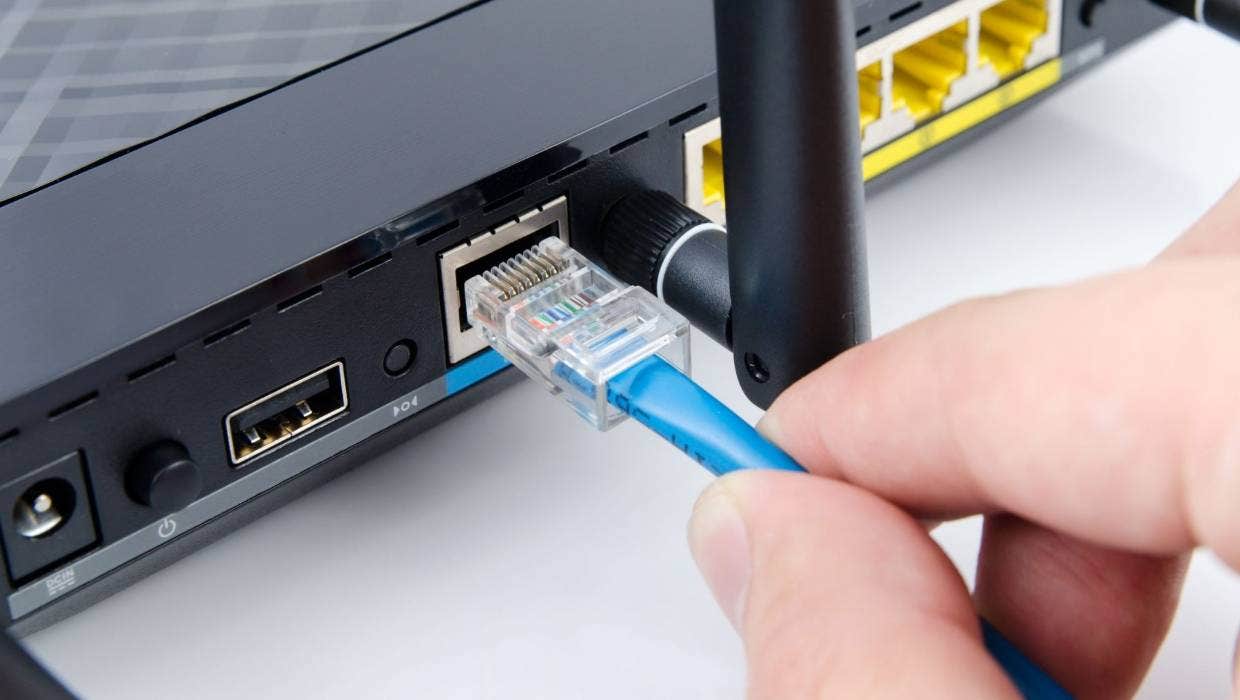It’s incredibly frustrating when your internet is not working, forcing you to put your digital life on hold.
When it happens, put on your detective’s hat and investigate the root cause of the network issuer. There are various reasons the internet may fail, including hardware, software, and connectivity issues.
You can quickly determine the cause of internet failure by checking the signal lights on your devices.
Why Router Won’t Connect to Modem
If your router won’t connect to modem, try this first. Reboot the router and the modem by unplugging the power cord from each device, and waiting at least 30 seconds before plugging the devices back in. Plug in the modem first, then the router.
Also, check for any faulty or loose cords. Check the cable between the modem and the router, the cable linking the modem and wall socket, power cables for both devices, and the ethernet cable connected to your router. Confirm the cables are properly connected, and not faulty.
Also see: Blue router on router but no internet
How to Connect Your Router to a Modem
Linking your router to a modem enables you to access the internet from various wireless devices in your home. It also provides added security against cyber threats like malware.
Connecting a router to a usually involves using Ethernet cable, coaxial, and power cables for both network devices.
Follow the following steps if your router fails to connect to a modem:
- Ensure that the internet cable is securely connected to the wall outlet
Are you using fiber optic or cable internet? Connect a coaxial cable to the wall outlet that supplies the internet. If you are using a DSL modem, connect a phone line to the wall port of your phone.
- Connect the other end of the internet cable to the modem
The other end of the phone or coaxial cable should be firmly attached to the correct port of your modem. This will enable the modem to receive internet.
- Connect your modem’s power cable to the device
Look for the AC adapter port on your modem and plug the power cord into your modem, then plug the cable into an electrical outlet.
- Power on the modem
Some modems will automatically power on after you switch on the power outlet. If your router does not power on automatically, locate the power switch and turn the modem on.
- Connect an ethernet cable to your modem
Locate the Ethernet port on your modem and connect an Ethernet cable. If your laptop does not have an ethernet port, here is how to connect an ethernet cable to a laptop without an ethernet port.
- Plug the Other End of the Cable Into Your Router
Connect the other end of the Ethernet cable to the WLAN or Internet port on your router.
- Connect the Router Power Cord
Find the AC adapter port on the router and attach the AC adapter, then plug the power cord into an electrical outlet. Give it a few minutes to boot up fully when your router powers on.
- Plug the Second Ethernet Cable Into the Router
Locate the ports labeled “LAN” and connect an Ethernet cable.
- Connect the Ethernet Cord to Your PC or Laptop
Connect the other end of the Ethernet cable to your computer via a LAN port.
- Check the Lights on Your Modem and Router
Ensure that the LED indicators on your modem and router are lit up. Green lights usually show that the devices are securely connected. The color of the lights can mean different things to various brands or models. Therefore, read the user’s manual or consult the manufacturer’s website to get accurate translations.
- Open a Web Browser From Your Computer
Locate a web browser on your PC and open it.
- Log Into the Router’s Network Settings
Type your router’s IP address in the browser address bar and connect to the router’s web interface. Since default router IP addresses vary by model and brand, consult the user’s manual to locate your router’s IP address. Sign in to the router through the default username and password from the router user’s manual.
Be sure to switch up the network name and passwords for added security. Leaving the router with the default settings will make your network vulnerable to unauthorized network access.
Whether installing a new router or experiencing network bottlenecks, you need to update your router’s firmware. Navigate through the router’s web interface and update the router.
How to Troubleshoot Setup
If you follow the steps above and still experience network issues, follow the steps below:
- Unplug your modem for 20 seconds and wait for two minutes before connecting it.
- Reboot the modem and router.
- Switch out the Ethernet cables or coaxial cables.
- Confirm from your internet service provider if there’s a network outage.
- Verify if your modem and router are compatible.
- Determine whether your modem needs a specific configuration.
FAQs
Can a router work without a modem?
Yes. Devices connected to a Wi-Fi router network can send data to other connected devices like hard drives and printers. However, you will need a modem and internet service provider to use the internet.
Why can’t my modem connect to the internet?
The common suspects are:
- Loose cable connections
- Damaged cables
- Outdated firmware

